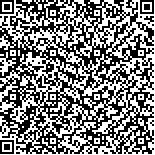| 摘要: |
| 本文研究了不同氮限制时间(0、1、2、4、6 d)对海绿球藻(Halochlorococcum sarcotum)和微绿球藻(Nannochloris oculata)叶绿素荧光参数、细胞密度、生物量、叶绿素含量、总脂含量以及脂肪酸组成的影响。本实验结果表明,海绿球藻的最大相对电子传递速率rETRmax和快速光曲线的初始斜率α都随氮限制时间增加而降低,而光系统II最大光能转化效率Fv/Fm、非光化学淬灭NPQ以及最小饱和光照强度Ik都有先增加后下降的趋势,各参数都在氮限制第6 d达到最小值。微绿球藻上述各参数的变化趋势均为随着氮限制时间增加而逐渐下降。随着氮限制时间增加,海绿球藻和微绿球藻细胞密度都有较小幅度的增加,分别在第5 d和第6 d达到最大值;两种绿藻的叶绿素含量均随氮限制时间的增加而降低,氮限制0 d时叶绿素含量最高,6 d时叶绿素含量最低;在氮限制第2 d时二者总脂产率都达到最大值,分别为0.021 g·(L·d)-1和0.017 g·(L·d)-1,由此可见,适合海绿球藻和微绿球藻产脂的最佳氮限制时间均为2 d。海绿球藻和微绿球藻的脂肪酸主要包括16:0、18:0、20:0、18:1n-9、18:2n-6和16:3n-3等。氮限制对海绿球藻的18:1n-9和MUFA(单不饱和脂肪酸总和)影响显著,均随氮限制时间增加而增加,而PUFA(多不饱和脂肪酸总和)含量随氮限制时间增加而降低;氮限制对微绿球藻的16:0、18:1n-9、16:3n-3、MUFA和PUFA有显著影响,随着氮限制时间增加,16:0、18:1n-9及MUFA含量逐渐增加,而16:3n-3和PUFA含量逐渐降低。本实验结果可为进一步开发海绿球藻和微绿球藻并对其进行大规模培养提供理论依据。 |
| 关键词: 海绿球藻 微绿球藻 氮限制 细胞密度 叶绿素荧光参数 总脂含量 脂肪酸组成 |
| DOI:10.11759/hykx20190831002 |
| 分类号:S968.4 |
| 基金项目:山东省重点研发计划项目(2017GHY15104);"十二五"国家科技支撑计划(2011BAD14B01) |
|
| Effects of nitrogen limitation time on growth, total lipid content, and fatty acid composition of Halochlorococcum sarcotum and Nannochloris oculata |
|
LIANG Ying1, JI Wei-wei1, SHI Wei-jie1,2, TIAN Chuan-yuan1, HU Nai-xia1, YAN Yi-yun1
|
|
1.The Key Laboratory of Mariculture(Ocean University of China), Ministry of Education, Qingdao 266003, China;2.Marine Environment Monitoring Central Station of Qinhuangdao, State Oceanic Administration, Qinhuangdao 066002, China
|
| Abstract: |
| The present study evaluated the effects of nitrogen limitation time (0d, 1d, 2d, 4d, 6d) on various biochemical parameters of Halochlorococcum sarcotum and Nannochloris oculata, including chlorophyll content, cell density, chlorophyll fluorescence parameters, total lipid content, and fatty acid composition. For H. sarcotum, increase in the nitrogen limitation time resulted in a time dependent decrease in maximum photosynthetic efficiency (rETRmax)as well as initial slope of rapid curve (α). In comparison to these, maximum photochemical efficiency of PSⅡ (Fv/Fm), non-photochemical quenching (NPQ), and minimum saturating irradiance (Ik) showed an initial increase, which was followed by a decline with further increase in the nitrogen limitation time. Nitrogen limitation severely affected chlorophyll fluorescence parameters that reached minimum values on day 6. For N. oculata, all the parameters showed a gradual decrease with increase in the nitrogen limitation time. The cell density was observed to increase slightly with an increase in the nitrogen limitation time and maximum cell density was achieved on day 5 and day 6 for H. sarcotum and N. oculata, respectively. As the nitrogen limitation time increased, the chlorophyll content present in single cell was found to decrease in both the species. Total lipid production was maximum on day 2 of nitrogen limitation, with a total lipid content of 0.021g·(L·d)-1 and 0.017g·(L·d)-1 in H. sarcotum and N. oculata, respectively. Thus, the optimum nitrogen limitation time for lipid production in H. sarcotum and N. oculata was two days. The fatty acid composition of H. sarcotum and N. oculata mainly includes 16:0, 18:0, 20:0, 18:1n-9, 18:2n-6, and 16:3n-3 molecules. Nitrogen limitation time was found to severely affect the levels of 18:1n-9 and MUFA in H. sarcotum. The levels of 18:1n-9 and MUFA showed a positive correlation with nitrogen limitation time, while PUFA levels showed a negative correlation. Nitrogen limitation time showed significant effects on the levels of 16:0, 18:1n-9, 16:3n-3, MUFA and PUFA in N. oculata. The levels of 16:0, 18:1n-9 and MUFA increased while 16:3n-3 and PUFA decreased with increase in the nitrogen limitation time. Therefore, these results provide an insight into the effects of nitrogen limitation on various parameters of H. sarcotum and N. oculata, which could be exploited for large-scale cultivation and exploitation of H. sarcotum and N. oculata. |
| Key words: Halochlorococcum sarcotum Nannochloris oculata nitrogen limitation cell density chlorophyll fluorescence parameter total lipid content fatty acid composition |
